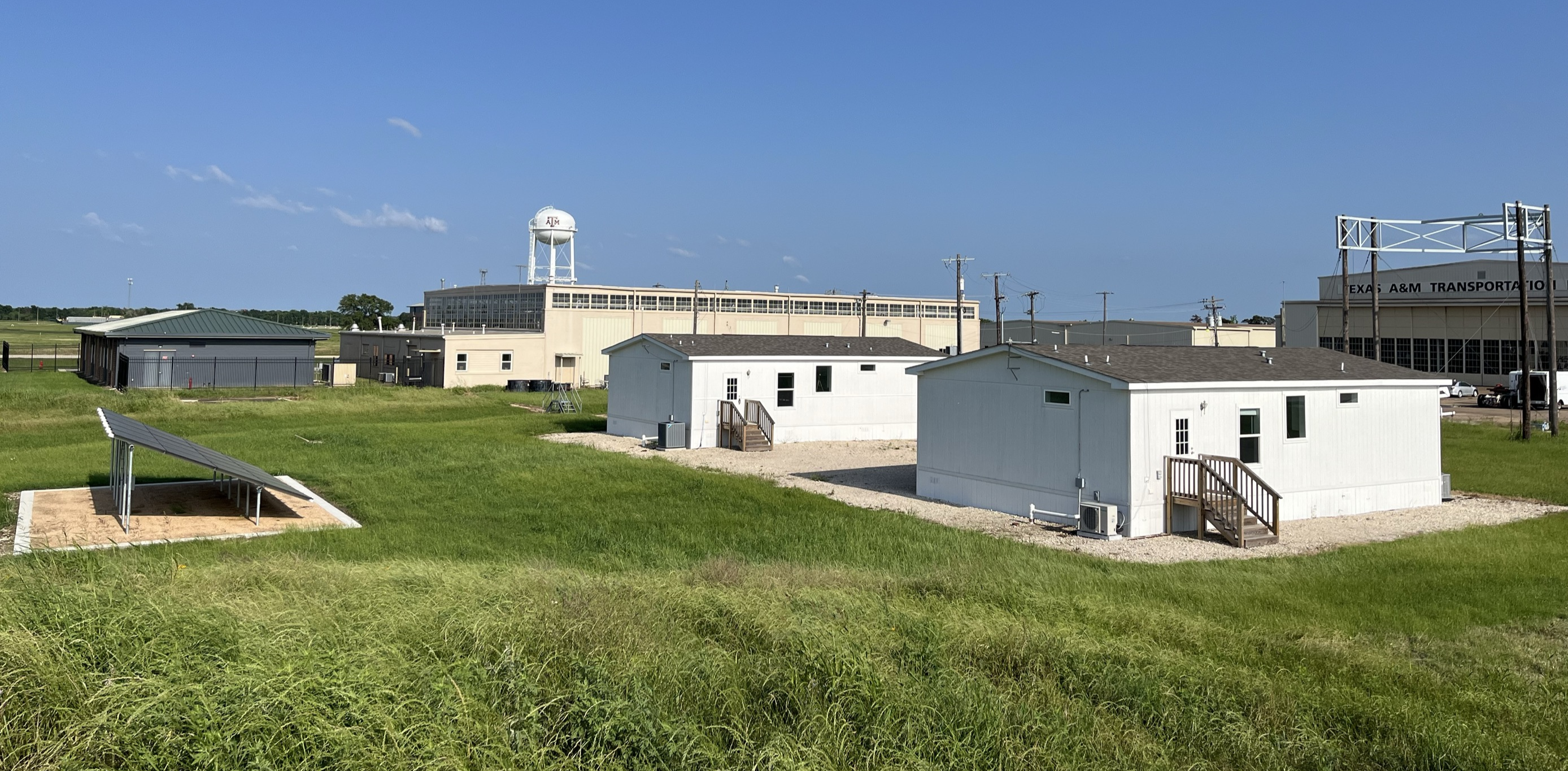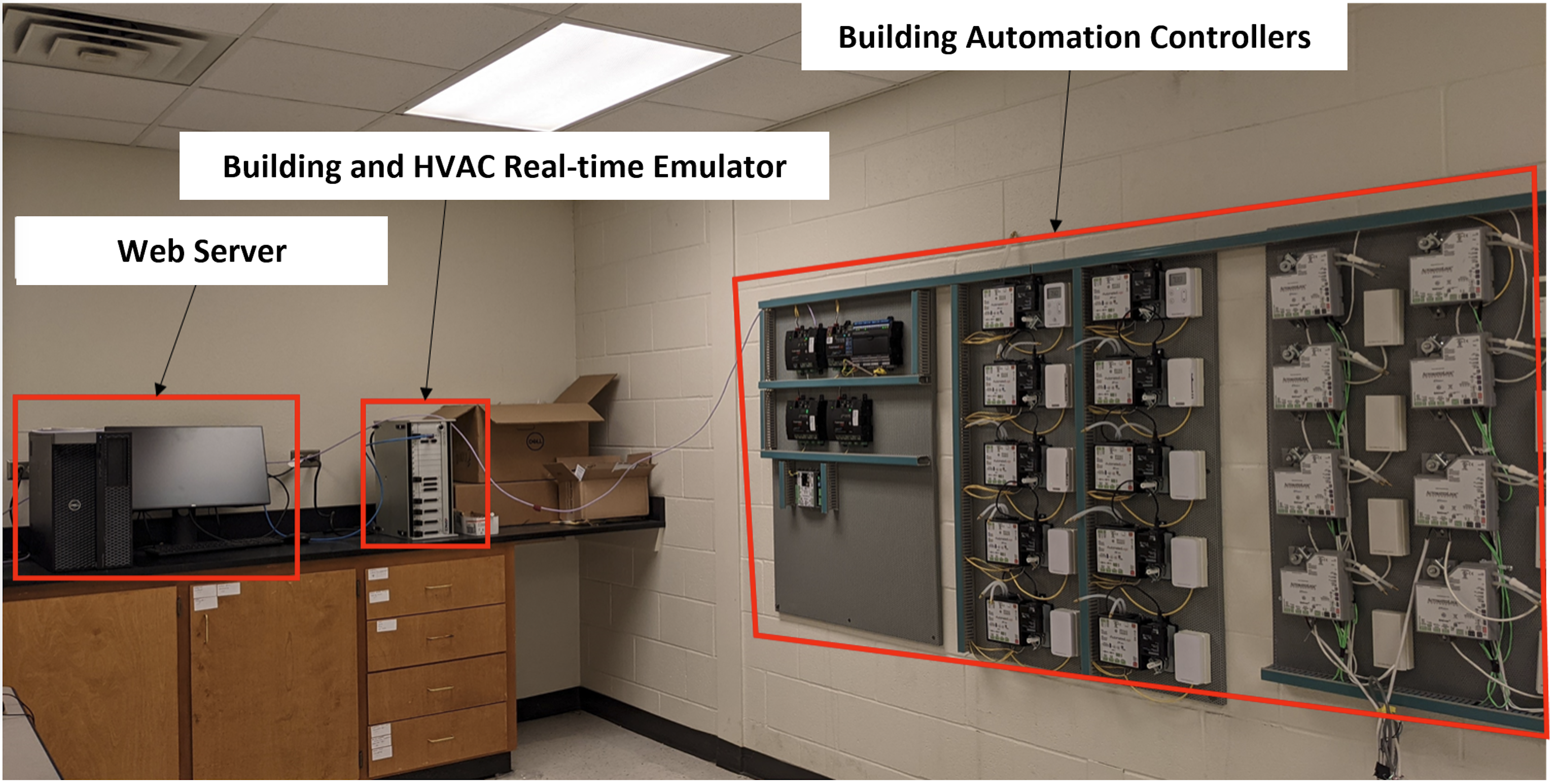Texas A&M Smart and Connected Homes Testbed
The Texas A&M Smart and Connected Homes Testbed (TAM-SCHT) is located on the RELLIS campus in Bryan, Texas, United States. This testbed is used by the Building Energy and HVAC&R research group at Texas A&M University for smart home technology and smart grid applications research. Two identical homes were designed with the manufacturer to achieve different test capabilities for the lab homes. These two homes are 1,200 ft² (111 m²), have 3 bedrooms and 2 bathrooms, and are equipped with removable interior walls which allow research to alter the floorplan. This smart and connected home testbed will provide capabilities to test many areas in GEB (grid-interactive efficient building) research. A local solar panel farm with an on-site battery will allow DER (distributed energy resources) research, the reconfigurable envelope will aid in advanced envelope material testing, and smart appliances in the house allow for demand response operation to be tested. The testbed provides researchers with the capability to test a wide range of building envelope (e.g., wall and windows), HVAC and hot water operation and equipment in the residential building application, and verify simulations and models.

Texas A&M Building Automation System (BAS) Hardware-In-the-Loop (HIL) Testbed
This HIL testbed is developed with the capability of tracking the real-time network traffic in a typical BAS as well as emulating the building dynamic and HVAC control and operation status. The HIL testbed is based on a standard BACnet compatible BAS in a local network with a server computer and local controllers for HVAC equipment, including chiller, air handling unit (AHU), and variable air volume (VAV) terminal boxes. The BAS server is running on the BACnet/IP network, the controllers are running on the ARCNET network, and a router connects the two networks. The building dynamics, including zone conditions and equipment status, are simulated in real-time via virtual building models on a HIL emulator and directly transmitted to the BAS local controllers. The network traffic between the BAS server computer and the controllers is tracked and available for analysis. The normal and fault operation status data and network traffic data generated by the HIL testbed can be used to develop algorithms for detecting and mitigating cyber-attacks. Such a HIL testbed can also be utilized for other sensor and control-related studies.

Water Source Heat Pump (WSHP) Hardware-In-the-Loop (HIL) Testbed
This testbed has the capability of integrating multiple real-time co-simulations with fast-response high-accuracy hardware to enable realistic and comprehensive investigation of a variable-speed water-to-air heat pump operating in either heating or cooling mode. A 2-ton (7 kW) variable speed WSHP is the focal point of the facility, which can be separated into two sub-systems, one being the airside duct system and the other being the waterside hydronic system.

